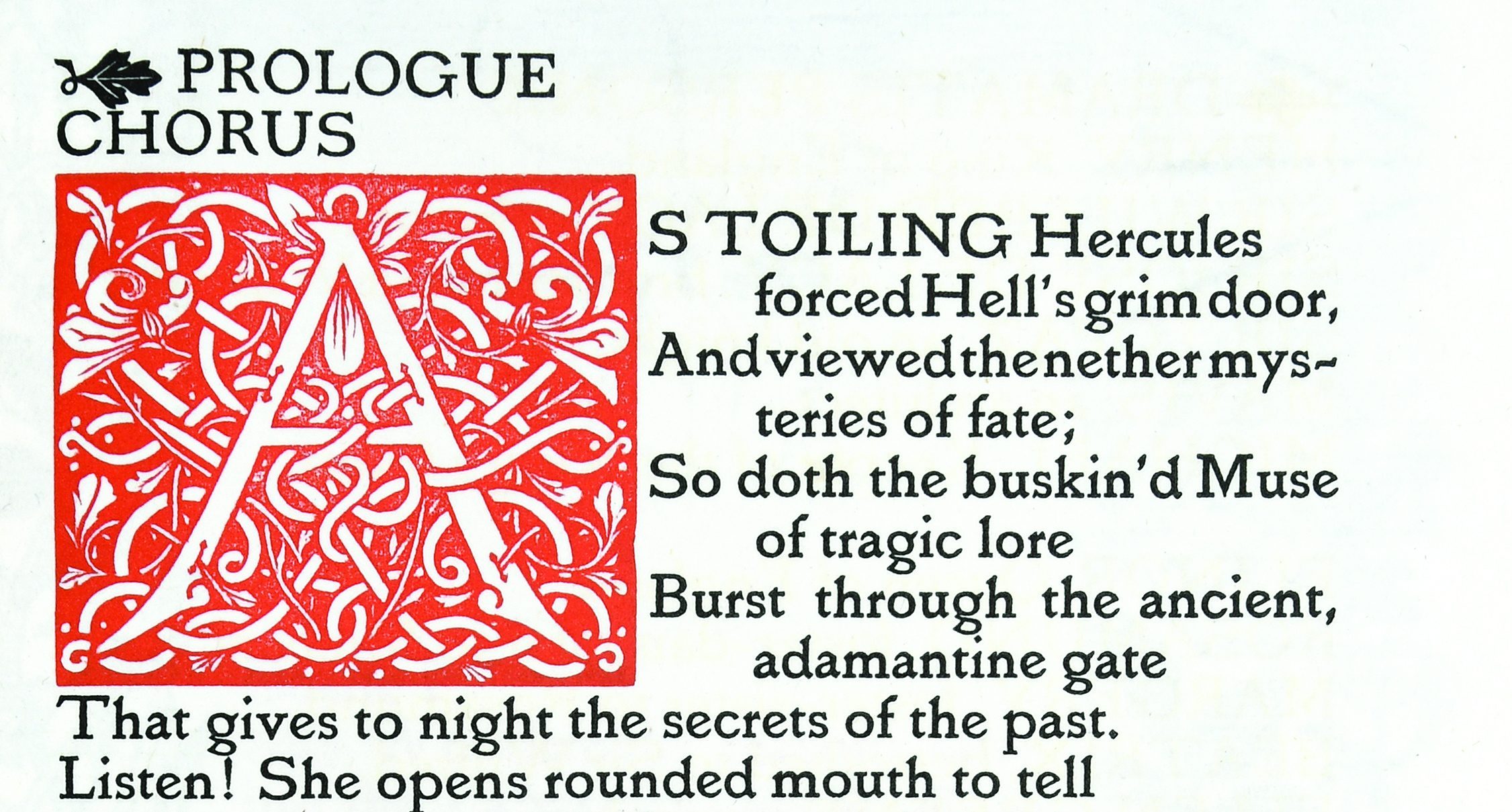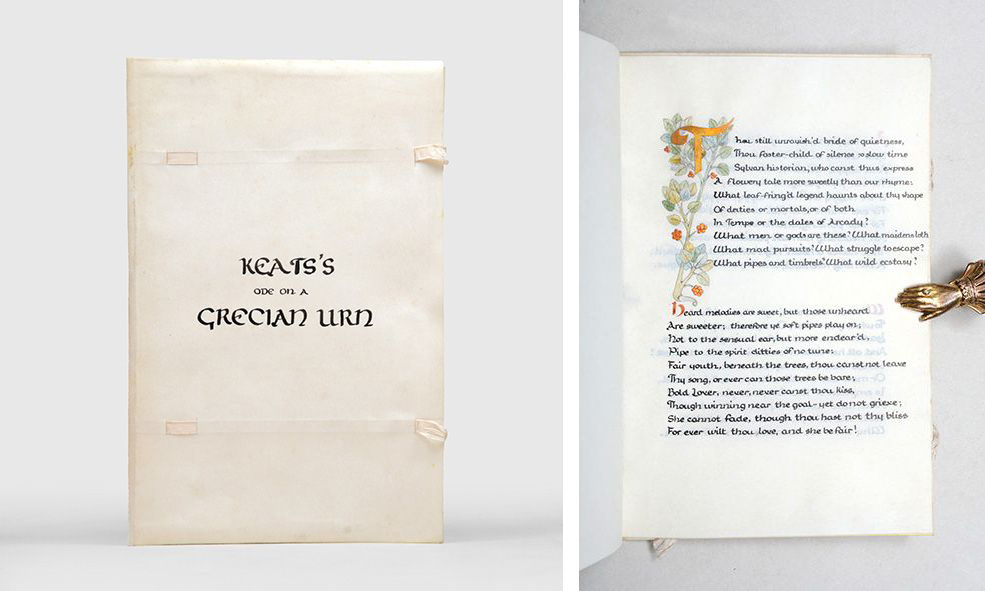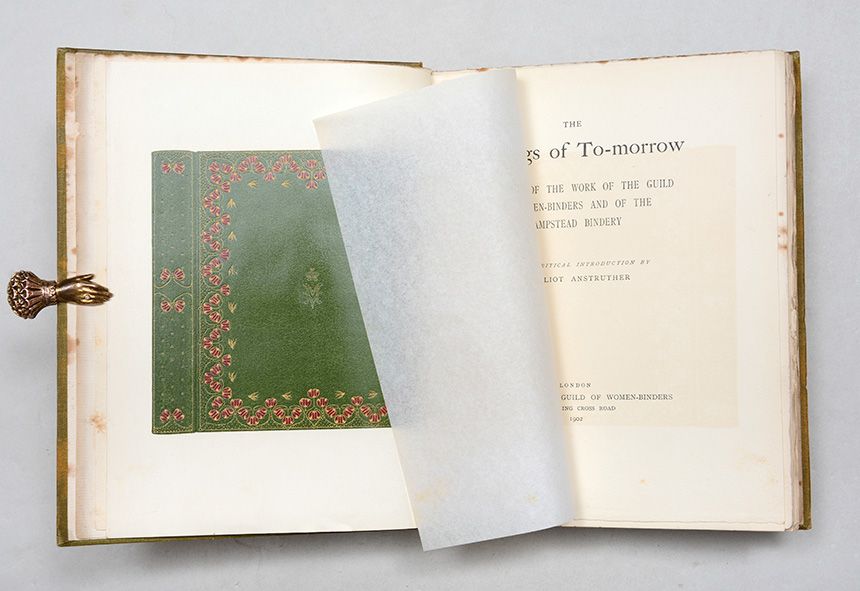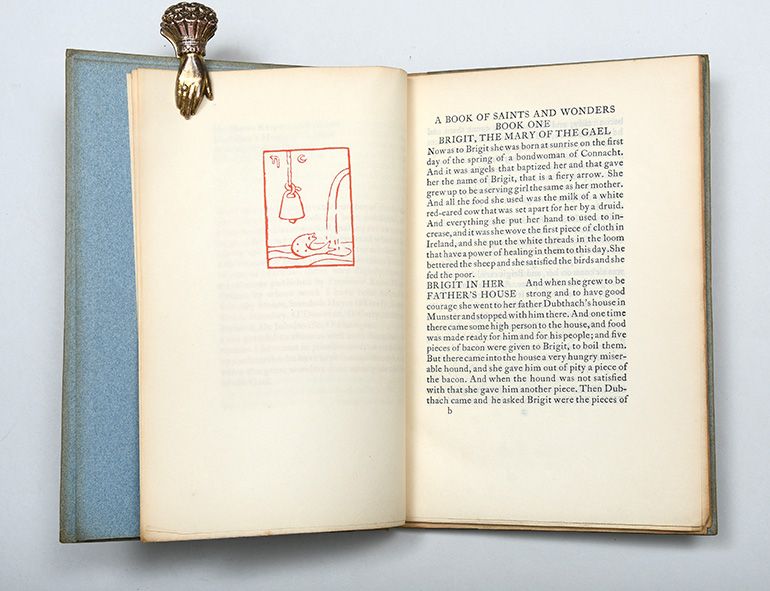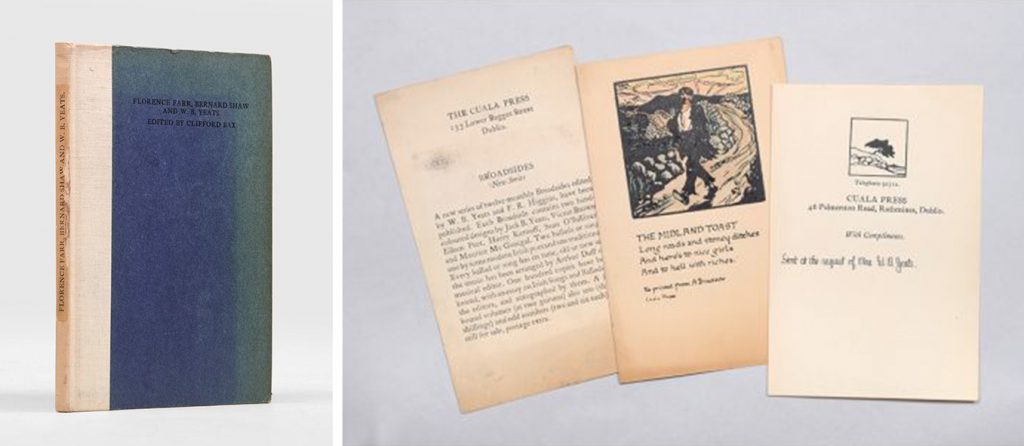Illustration from CUALA PRESS: YEATS, Jack B. A Broadside. Series 1-7, comprising nos. 1-84 (complete set). Dun Emer and Cuala Press, 1908-1915.
By Suzanna Beaupré
Peter Harrington is proud to present a unique Arts and Crafts calligraphic manuscript of John Keats’s Ode on a Grecian Urn, produced in 1903 by the renowned binder and calligrapher Anastasia Power.
Power was born in Whitby, the ninth, and youngest daughter of a local occultist. Initially a student of book binding grandee Douglas Cockerell, she soon set up a binding studio on Museum Street in London with fellow binder (and family friend of Virginia and Vanessa Stephen) Sylvia Stebbing, where they were regularly visited by the two sisters. There, in 1901, the young Virginia Stephen (later Woolf) “asked for lessons in binding old books of sheet music, and engaged in her book binding with purpose and application”. Writing to her cousin Emma Vaughan, she said “I have been making endless experiments… there seem ever so many ways of making covers… which the ordinary lidders never think of”. Undoubtedly these early experiments with Power had significant bearing on the first books she was to create at her own Hogarth press, providing a direct influence from the earliest women in the private press movement to its later continuation.
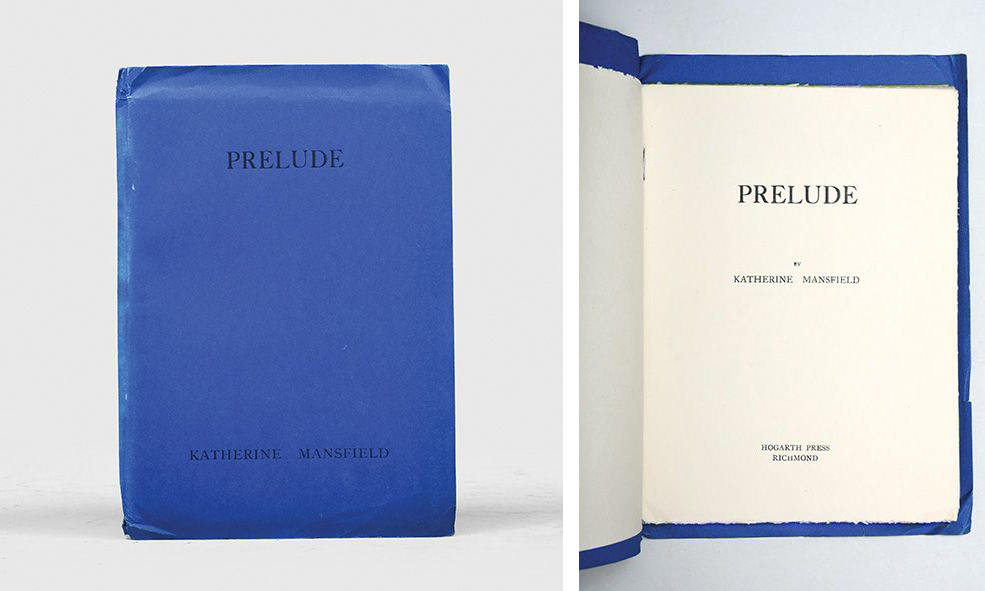
MANSFIELD, Katherine. Prelude, printed and Published by Leonard & Virginia Woolf at The Hogarth Press, . £6,750.00. (BOOK SOLD)
Alongside her role as binder Power was “an accomplished artist and calligrapher” and practised illumination with Fred Partridge (Dowd, p. 61). She consequently provided the illumination for much of the Press’s output at this time. This manuscript, which is rendered entirely on vellum, appears to have been for her personal practice; Essex House never produced an edition of this work.
Power is a standout example of women in the private press movement, excelling in her work and directing the output of the press, however, she was far from the only example. Bookbinding was a key component of the press movement and there were several remarkable female binders working adjacent to the presses at the time. These included the renowned Sarah Prideaux, Katharine Adams, and Sybil Pye, with the Guild of Women Binders established in 1898. Marianne Tidcombe’s crucial work Women Bookbinders 1880-1920 (1996) explores many more.
Women were employed across the book production process as compilers, designers, authors, artists, and illuminators, roles which have been explored more broadly by writers such as Anthe Callen in Women Artists of the Arts and Crafts Movement, 1870-1914 (1979).
A key example of a fully female-run press, aiming to provide an education in these processes and work for women in all of these roles, is the Cuala Press, one half of Cuala Industries, which came out of another female-run press, Dun Emer. In 1903 Elizabeth Yeats (known as Lolly) and her sister Lily joined embroiderer Eveyln Gleeson in forming Dun Emer, with Lily running the embroidery arm, Evelyn the weaving, and Lolly the printing.
Artistic and financial tensions between the Yeatses and Gleeson eventually led to the split of the organisation in 1908, the sisters reforming as Cuala Industries. Cuala was founded with the aim of reviving the craft of book printing in Ireland and especially “to give work to Irish girls, the production of books being incidental to the encouragement of crafts among Irish women” (McMurtrie, p. 472). Each element of the book production was carried out using Irish materials, using all-rag paper that was produced locally and creating “clearly legible, slender volumes with distinctive paper labels, seen as the sole survivors of the handcrafted ideal established in 1900 by Walker and T. J. Cobden-Sanderson’s Doves Press” (ODNB). The press was instrumental in the early printings of W. B. Yeats’s works, as well as works by other influential Irish authors such as Lord Dunsany and Oliver Gogarty.
Another example of a press equally concerned with localised art and craftsmanship, this time in Wales, was the Gregynog Press. This influential private press was founded in 1922 by sisters Gwendoline and Margaret Davies at their house, Gregynog Hall, in rural mid-Wales. The press established a reputation for its woodcut illustrations, harmonised with the type page. Two of the key artists working at the press were engravers Gertrude Hermes and Agnes Miller Parker.
Bibliography
Crawford, Alan, C.R. Ashbee: Architect, Designer & Romantic Socialist, Yale University Press (2005); Dowd, Anthony in Bookbinder: Journal of the Society of Bookbinders and Book Restorers, Volumes 7-8, The Society, (1993); Humm, Maggie, Edinburgh Companion to Virginia Woolf and the Arts, Edinburgh University Press (2010); McMurtrie, Douglas C., The book : the story of printing & bookmaking. Oxford University Press (1948); Thomson, John Mansfield, Farewell Colonialism: The New Zealand International Exhibition, Christchurch, 1906-07, Dunmore Press (1998); Tidcombe, Marianne, Women Bookbinders 1880-1920, Oak Knoll Press (1996).
Our regularly scheduled miscellany for the summer months, this catalogue showcases a selection of new acquisitions to our shelves.
For this catalogue, we are proud to partner with Beat – the UK’s leading eating disorder charity. Peter Harrington will donate 20 per cent of the list price of all catalogue orders to Beat to support its efforts to provide prompt help to those affected.
